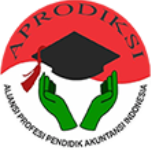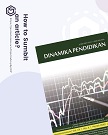PENGGUNAAN E-LEARNING ILMO UNTUK MENINGKATKAN MUTU PERKULIAHAN DI FAKULTAS EKONOMI
(1) Jurusan Akuntansi FE Unnes
(2) Jurusan Akuntansi FE Unnes
Abstract
Keywords
Full Text:
PDFReferences
Adams, D. A., R.R. Nelson, R.R., dan Todd, P.A. Perceived Usefullness, Ease of Use, and Usage of Information Technology. MIS Quartery (162), 1992, pp. 227-247.
Agarwal, R. Dan Prassad. J. Are Individual Differences Germane to the Acceptance of New Information Technology? Decision Sciense. Vol. 30, No. 2, pp. 362-391.
Ajzen, i. 1985. From Intentions to Actions: A Theory of Planed Behavior, in Action Control: From Cognition to Behavior. J Kuhl and J Beekmann (eds), New York, Springer-Vrlag, Hal 11-39.
Ajzen, I. dan Fishbein, M. Understanding Attitude and Predicting Social Behavior. Pretince-Hall, Englewood-Cliffs, Nj. 1980.
Anwas. 2000. Internet: Peluang dan Tantangan Pendidikan Nasional. Jakarta: Kumpulan Jurnal Teknodik Depdiknas.
Chau,P.Y.K., dan Hu, P.J. Examining a Model of information Technology Acceptance by Individual Professionals. An Exploratory Study. Journal of Management Information System, 2002, p. 1991-229.
Davis, FD., Bagozzi, RP., & Warshwa, PR. User Aceptance of Computer Technology: Comparison Two Theoretical Models. Management Science, (35), 1989, pp 982-1003.
Darin E. Hartley. 2001. Selling e-Learning. American Society for Training and Development.
Dublin, L. and Cross, J. Implementing eLearning: Getting the Most from Your Elearning Investment, the ASTD International Conference, May 2003.
Dewan Pendidikan Tinggi Direktorat Pendidikan Tinggi. Sistem Penjaminan Mutu, Sistem Assesment Akademik dan Evaluasi Akademik di Perguruan Tinggi. Tahun 2006.
Djunaidi, dkk. 2009. Panduaun E-Learning Ilmo (Increasing Learning Motivation) Versi 0.1, Edisi Dosen. Unnes: UPT Komputer.
Gefen, D. dan Straub, D.W. Gender Differences in the Perception and Use of e-mail: an Extension to the Technology Acceptance Model. MIS Quarley, pp. 389-400.
Iqbaria, M., Guimaraes, T., & Davis, F.D. Testing the Determinants of Microcomputer Usage via a Structural Equation Model. Journal of Management Information System (11), 1995, pp. 87-114.
Jogiyanto. 2007. Sistem Informasi Keperilakuan. Penerbit Andi: Yogyakarta.
Rediana, Setyani. Pemanfaatan Internet Sebagai Sumber Belajar. Jurnal Pendidikan Ekonomi DINAMIKA PENDIDIKAN, Volume V, Nomor 2, Desember 2010, halaman 117-134.
Romi, Satria Wahono. Sistem e-Learning Berbasis Model Motivasi Komunitas. Jurnal Teknodik No. 21/XI/TEKNODIK/AGUSTUS/2007.
Scott, George M. 1999. Prinsip-prinsip Sistem Informasi Manajemen. PT Radja Grafindo Persada: Jakarta.
Sun, H. dan Zhang, P. A New Perception to Analyze User Technology Acceptance. Warking Paper, Syracuse University, 2003.
Szajna, B Empirical Evaluation or revisedTechnology Acceptance Model. Management Science (42:1), 1996, pp. 85-92.
Undang-Undang Republik Indonesia Nomor 20 Tahun 2003 tentang Sistem Pendidikan Nasional.
Undang-Undang Republik Indonesia Nomor 14 Tahun 2005 tentang Guru dan Dosen.
Universitas Negeri Semarang, 2008. Rencana Strategis Teknologi Informasi dan Komunikasi Universitas Negeri Semarang. Universitas Negeri Semarang 2006-2010.
Van der Heijden, H. Using the Technology Aceptance Model to Predict Webside Usage: Extensions and Empirical Test. Series Research Memoranda. 2000.
Vankatesh, V. dan Davis, F.D. A Theoretical Extension of the Technology Acceptance Model: Four Longitudinal Field Studies. Management Science (46), 2000, pp. 186-204.
Refbacks
- There are currently no refbacks.

This work is licensed under a Creative Commons Attribution 4.0 International License.

.png)

.png)





